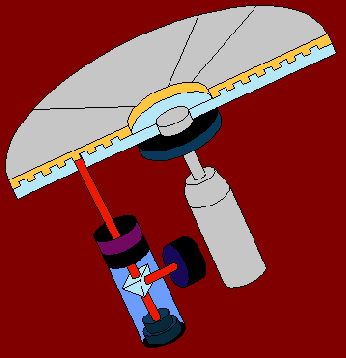CD-ROM Drives
|
|
CD-ROM drives use CD-ROMs which are optic readable media and are read with a very thin and very precisely aimed laser beam. CD-ROM discs were first developed by the record industry, but it was soon adopted into the computer industry.
|
|
A CD holds a 3-mile long spiral of information that radiates outwards from the centre, and the location of any particular item is measured in minutes and seconds from the beginning of the disc. This is illustrated below.
|
|
|
|
|
|
|
|
|
|
|
|
|
|
|
|
|
|
|
|
|
|
|
|
|
The speed at which your computer CD drive runs when playing a CD is known as �single speed� or 1x. Standard CD drives in use today can read software at peak speeds of up to 40x or faster.
|
|
A CD is made up of three layers, a plastic top layer, a reflective layer that looks like aluminium foil and then a protective layer, this is shown below.
|
|
|
|
|
|
|
|
|
|
|
The way a CD-ROM drive works is that a motor rotates the CD-ROM in the drive, the motor is constantly varying the rate at which the CD-ROM disc spins this is so that regardless of where the detector is located in relation to the radius of the disc, the portion of the disc immediately above the detector is always rotating at the same speed.
|
A laser located beneath the CD-ROM projects a concentrated beam of light that penetrates the protective layer and strikes the reflective layer on the bottom of the disc. The reflective layers surface alternates between �lands� and �pits�, lands are flat, and pits are depressions in the surface. The two types �lands and pits� are a record of the 1s and 0s used to store data. Light that strikes a pit is scattered, but light that strikes land is reflected back, where it passes through a prism that sends the reflected light to a light sensing diode.
|
Each pulse of light that is reflected strikes a light sensing diode and generates a small electrical voltage for a period of time depending on the length of the land. The pattern of reflected light and scattered light is interpreted as binary with scattered light registering as 0s and reflected light a 1s the voltages generate a stream of 1s and 0s that the computer can understand and interpret as data.
|
This process is illustrated below.
|
|
|
|












